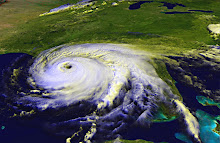After the hurricane-busy summers of 2004 and 2005, I remember some of the hold-ups for getting aid into stricken areas.
DISTRIBUTION SITES
FEMA may be ready to bring in water, ice, and other supplies, immediately after a disaster, but where and how will that be distributed to people in need?
After Ivan, a line of cars, and another long line of people on foot would snake around the parking lot where trucks were passing out water and ice. Permission had to be obtained from the parking lot owner. The parking lot had to be clear of debris and downed power lines. The roads in and out of that area had to be clear for traffic. The sites needed to be in areas accessible to a lot of people, including people who don't have their own cars or maybe didn't have enough gas in their tanks to sit in a line of traffic for two hours.
Major roads or airport tarmacs in the disaster area must also be cleared. The trucks are usually waiting nearby, loaded with supplies. Our local power company sent a caravan of linemen and other personnel to the area about to be hit by Hurricane Irene. They traveled most of the way a day or two before the storm made landfall, so they could move in immediately after the storm passed to start putting power lines back together.
Hurricanes Ivan (2004) and Katrina (2005) both destroyed major roads and bridges, cutting off that route into the disaster area. That meant everyone who evacuated merged with everyone coming to help and they crawled along a secondary route. Necessary detours and traffic jams can add hours to the process of bringing in supplies and other aid.
These things have to be coordinated with local emergency management officials. If they haven't thought through potential disaster scenarios (hurricane, tornado, earthquake, flood, disease, fire, terrorist attack), they may find themselves playing catch-up. Hopefully, your city or county has created a disaster playbook that will allow them to provide instructions quickly and easily to FEMA and other agencies and help them communicate what's happening to residents and aid workers.
We don't like to think about worst case scenarios, but it's the only way to effectively prepare for disaster.
Wednesday, September 14, 2011
Subscribe to:
Post Comments (Atom)

3 comments:
It was very scary for us last summer when a hurricane hit my area. My town was pretty prepared and kept alerting us and doing the best they could with information. This is a great helpful article with plenty of advice and everyone should read this. Some areas were hit harder then others so we really do not know what damage there will be until after the hurricane is over. But it is best to be prepared for the worst.
Maryann D.
twinkle at optonline dot net
Thank you for sharing important information that would help a community prepare for a hurricane. I live in South Texas and we rarely experience any majoy hurricanes because they never make it this far but it is good to be prepared because you never know.
Being in Southeast Alabama (30 minutes from the Florida and Georgia borders) I keep a close watch on hurricane activity since we've been known to get high winds, rain and sometimes damage from the outskirts of them. Hurricane Ivan was my first and it was scarey.
Post a Comment